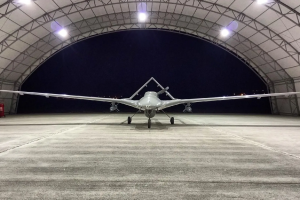Hezbollah used drones to attack Netanyahu’s home in Caesarea, causing casualties and damage
Summary: Hezbollah launched a bold attack on Israeli Prime Minister Benjamin Netanyahu’s residence in Caesarea using three drones, with one striking a building on the property. While there were reports of casualties and damage, Netanyahu and his family were not present at the time. The residence, a site of recent anti-government protests, was part of a broader assault that also saw drones over Tel Aviv and more than 100 rockets fired at northern Israeli settlements, resulting in at least one fatality and several injuries. The ongoing conflict between Hezbollah and Israeli forces continues to escalate, with deadly drone strikes and ambushes causing significant casualties on the Israeli side. Hezbollah’s resilience and operational strength are posing an increasing challenge for Israel as tensions rise.
In a brazen display of force, Hezbollah targeted Israeli Prime Minister Benjamin Netanyahu’s private residence in Caesarea with three drones on Saturday morning. Two of the drones were intercepted, but the third managed to strike a building on the property. Unconfirmed reports have suggested casualties, while social media posts hinted at possible damage to the Prime Minister’s residence. However, Netanyahu and his wife, Sara, were not at home during the attack, and their son Yair remains in Miami, reportedly funded by state coffers—a situation that has drawn growing public ire.
The Prime Minister’s Office confirmed the attack but remained vague about the extent of the damage, only acknowledging that the residence was targeted. In a strange twist, one of the drones was spotted alongside an Israeli helicopter, though it’s unclear whether this was the same drone involved in the Caesarea strike. Netanyahu’s residence, located in southern Haifa, has been a focal point for anti-government demonstrations in recent months, making it a high-profile target for Hezbollah’s audacious operation.
Sirens Disrupt a Holiday Morning
Simultaneously, Hezbollah unleashed two drones over Tel Aviv and fired over 100 rockets at various settlements in northern Israel. Preliminary reports indicate one fatality and at least nine injuries in Haifa and the Western Galilee. Residents of central and northern Israel were abruptly awakened by sirens, which shattered the holiday calm and forced a mad rush to shelters. The ongoing drone and rocket assaults have left many civilians grappling with injuries from panic-driven sprints to safety, while hospitals are seeing an influx of patients suffering from acute anxiety.
A Continuing Onslaught
This latest attack follows a series of deadly confrontations between Hezbollah and Israeli forces. Last week, a drone strike targeted a cafeteria in a military facility, and just days ago, an ambush in southern Lebanon claimed the lives of two officers and three reservists, with seven others seriously wounded. Despite the Israeli army’s attempt to impose a media blackout, news of the ambush quickly spread through international outlets.
Daily clashes between Hezbollah and Israeli forces have resulted in mounting casualties on the Israeli side, with reports of 20 to 30 soldiers killed or injured each day. The resilience of Hezbollah fighters and their ability to down state-of-the-art Israeli drones highlights the intensity of the ongoing conflict.
Hezbollah’s Growing Power: What If Nasrallah Were Still Alive?
The recent escalation demonstrates that Hezbollah’s power remains undiminished, despite Israeli efforts to dismantle its leadership and infrastructure. The Lebanese militant group has proven it can sustain its operations even with only a fraction of its capabilities. Israel, which once considered a swift invasion of Lebanon, now faces the reality of a well-prepared and highly capable foe—one that has grown stronger since their 2006 conflict.
As the situation intensifies, the question remains: How long can Israel withstand the pressure of an adversary whose strength continues to rise, even as it operates from the shadows?






